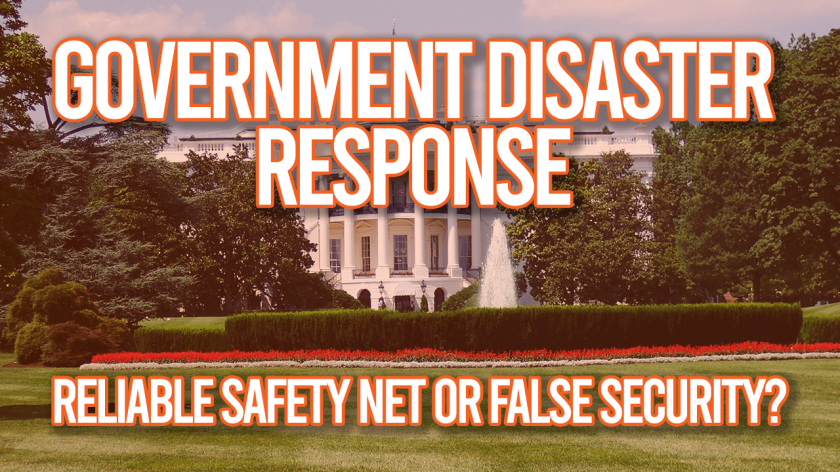Introduction
The role of government in disaster management is a topic fraught with passionate discussion and widely differing opinions. Central to this debate is the issue of whether government disaster response, as currently structured and executed, is a reliable safety net or a misguided crutch offering a false sense of security. The answer, as with most things in life, is not entirely black or white. Instead, it lies within a wide spectrum of greys, conditioned by a complex interplay of socio-political factors, the scale and nature of disasters, bureaucratic efficiency, and individual and community resilience.
The Essence of Government Disaster Response
A common misperception that often drives the debate on government disaster response is the lack of a clear understanding of its core purpose. Governments, regardless of their form or geographical location, are mandated to protect their citizens. As such, disaster management – including planning, response, and recovery – forms a critical component of this protective mandate.
The disaster response machinery typically includes the creation of risk reduction strategies, development and maintenance of disaster relief infrastructure, immediate emergency response, and long-term rehabilitation assistance. Thus, the government’s role extends far beyond merely providing post-disaster relief, which is often the most visible aspect of their involvement.
However, the inherent complexity and large-scale coordination required in managing disasters can lead to numerous issues, some of which may result in the public perception of a government’s disaster response as a false sense of security.
Potential Pitfalls and Challenges
- Bureaucratic Inefficiencies: Government agencies, due to their size and nature, are often riddled with bureaucratic red tape that can severely hamper swift disaster response. This delay can contribute to loss of life and property, making government intervention appear ineffective or unreliable.
- Inadequate Resources: Given the unpredictable nature and scale of disasters, government resources can often fall short of the needs. A lack of adequate emergency supplies, manpower, and infrastructure can compromise the effectiveness of disaster response, casting doubts on its reliability.
- Poor Communication: In the wake of a disaster, clear, timely, and accurate communication is vital. Failure in this area can lead to confusion and panic, which exacerbates the disaster’s impact and undermines public trust in the government’s capabilities.
- Inequitable Distribution: There are also concerns about the equitable distribution of aid. In many instances, the most vulnerable populations are often overlooked or underserved, raising serious ethical questions about the nature of government disaster response.
The True Value of Government Disaster Response
Despite these challenges, it is essential not to discount the true value of government intervention in disaster situations.
- Scale of Response: Governments are uniquely positioned to address disasters on a large scale. They have access to resources, personnel, and networks that are beyond the reach of individual citizens or non-governmental organizations.
- Order and Coordination: A centralized response to disaster helps prevent chaos and panic, providing coordinated relief efforts that prevent further loss and damage.
- Infrastructure and Planning: Government intervention also ensures that adequate infrastructure and planning are in place to mitigate the impact of disasters.
- Long-term Rehabilitation: Governments play a crucial role in long-term rehabilitation and reconstruction efforts, which individual citizens or smaller groups cannot undertake.
Balancing the Scale: Individual Preparedness
While acknowledging the critical role of government disaster response, it is equally important to highlight the need for individual and community preparedness. This element is often overshadowed by the emphasis on government responsibility.
- Self-reliance: Cultivating skills for survival, first aid, and emergency response can significantly increase individuals’ resilience in the face of disasters. These skills complement government efforts and reduce dependence on external aid.
- Community Cohesion: Strong communities can better withstand the impact of disasters. Neighbors can provide immediate aid and emotional support that can be more impactful than remote governmental assistance.
- Disaster Education: Knowledge about potential risks, early warning signs, and appropriate response measures can reduce the impact of a disaster on an individual level.
To sum it up…
So, is government disaster response a reliable safety net or a false sense of security? The truth is it can be both. It depends on the effectiveness of the government response, the nature of the disaster, and the level of preparedness of the individuals and communities involved.
Instead of placing the entire burden on the government, it is essential for individuals to realize that they too have a significant role in disaster management. It’s crucial that people equip themselves with survival skills, foster strong community ties, and remain educated about potential risks.
While the government’s role in disaster response remains vital and irreplaceable, a well-prepared population can greatly improve resilience and recovery. Therefore, the road to effective disaster management lies not in relying solely on the government but in creating a synergistic relationship between government action and individual preparedness. This balanced approach is our best chance of creating a resilient society capable of withstanding the devastating effects of disasters.

